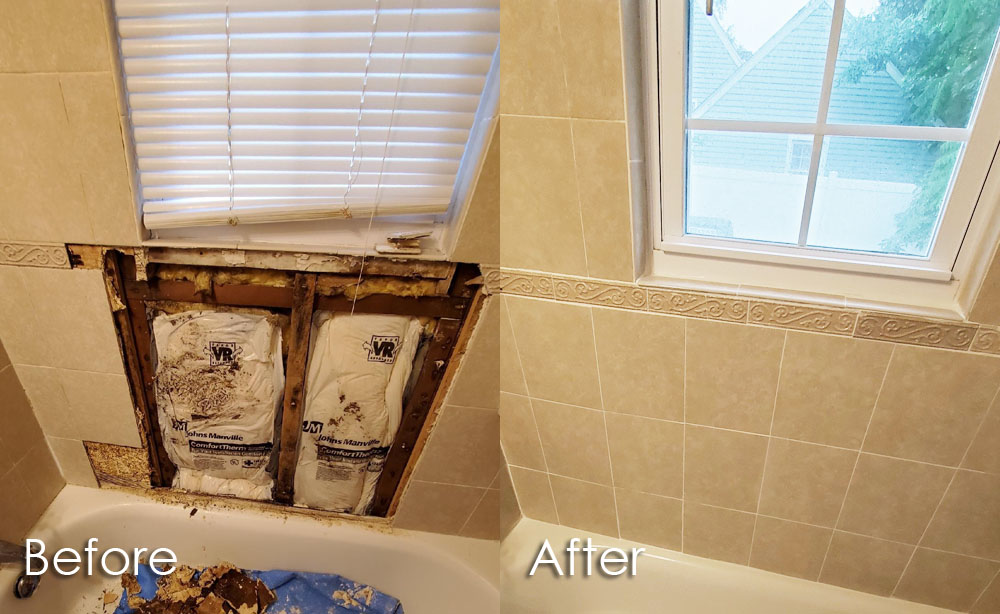Just how do you actually feel about How to Prevent Bathroom Water Damage?

The restroom is very at risk for moist build-up and also potential water damage because of the constant use water in it. This short article provides basic inspection methods to help discovering water damages risks.
The regular use water in the restroom makes it very vulnerable for damp buildup and also potential water damages. By evaluating it routinely, you can decrease water associated problems.
The adhering to set of evaluations is very easy to execute and ought to be done when in every 3 months in order to maintain your restroom healthy and also to stop potential water damages triggered by the bath tub, the shower, pipeline joints and plumbing, sinks, cabinets, and the bathroom
Do not disregard doing these examinations and also be comprehensive while performing them. Remember that these simple inspections can save you a lot of cash by supplying very early indicators for water damages
Bath tub and also Shower
The shower and also bath tub require special attention and maintenance. Check the tiles and change if cracked. Make sure that there is no missing grout between the tiles. Inspect and replace cracked caulking at joints where the walls meet the floor or the bathtub. Clogged drains pipes and also pipelines troubles will certainly protect against the bath tub from drying out as well as might suggest major issues below the bathtub. Consult with a professional immediately to prevent architectural damages. Focus on stainings or soft areas around the bathtub walls as they might show an interior leak.
Plumbing
Signs for water damage are hard to detect since the majority of pipelines are installed inside the wall surfaces.
Pay unique interest to flooring and wall surfaces wetness as well as stains as they might show an undetectable plumbing problem. Examine wetness levels in adjoining areas also.
Sinks as well as Cabinets
Sinks and closets are subjected to moisture and also moisture everyday and are usually ignored. Examine regularly under the sink as well as on the countertop over it. Fix any drip in the catch as it may suggest drainpipe issues. Look around the sink, slow-moving draining pipes might suggest a blocked drainpipe. Change sink seals if they are broken or loosened.
The Bathroom
The toilet is an at risk water junction. Examine the water lines as well as search for leakages around the toilet seat, in the pipe, and under the water container. If you spot any kind of indications of dampness on the floor around the commode, check for leakages in the toilet rim and also storage tank seals.
Be aware that hanging bathroom bowl antiperspirants increases the possibilities for clogs.
Water Damage Signs In The Bathroom To Avoid Cleanup
Musty smell
This is one of the easiest signs to catch because musty smells are so odorous. The damp, earthy, moldy smell should be a big red flag. The smell will develop when moisture gets trapped in surfaces, and begins to facilitate mold growth. Leaking pipes under cabinets, inside walls, and behind shower fixtures will cause moisture to stay trapped and not dry, which will lead to mold growth and spread. As soon as you notice any musty smells in your bathroom, have it checked for hidden water damage and cleanup signs.
Visible mold
If the smell isn’t there to give it away, sometimes you will actually see mold growth. Finding mold in your bathroom is a serious problem, because mold is very harmful to your health. By the time mold growth is visible, it also means that water damage has already occurred and been present for some time. The only way the mold problem can be resolved is to find the source of the moisture and get it stopped. To safely and adequately remove mold, you need to have professionals handle the remediation. Do not waste any time in getting mold problems addressed, fixed, and sanitized so that you can protect you and your family from the many respiratory symptoms caused by mold exposure.
Damaged floors
Bathroom floors should be able to withstand some exposure to water while still remaining in good condition. However, when excess exposure or water leaks occur, they will begin to damage even the most water-resistant flooring. If you notice any cracking, bubbling, staining, or warping on your bathroom floors, there is probably a water leak somewhere causing the distortion. If you notice areas of the floor have become softer, or even have a spongy feeling, there is probably damage to the subfloor. Subflooring is typically made up of plywood. When plywood is exposed to water or moisture, it will absorb it. Once it has become saturated, the weight of the excess water will cause the wood to swell and soften. Check the floors in your bathroom frequently to catch any of these sings before they lead to damaged subflooring.
Changes on walls
When water leaks behind walls, it will cause changes in the drywall. Peeling plaster, blistering paint, and soggy wallpaper are all good indicators that excess water is building up behind the wall. Water leaking behind drywall will cause it to swell and be soft to the tough. If you start to notice gaps along the trim of your walls, or where tile meets the wall, it could also be a strong indicator that there is a leak behind the wall. Any changes, distortion, or damage on the walls should be evaluated as soon as you notice it to prevent further water damage and cleanup.

As a fervent person who reads about Common Causes of Water Damage in a Bathroom, I was thinking sharing that piece of content was important. So long as you liked our post kindly make sure you remember to share it. I cherish reading our article about How to Prevent Bathroom Water Damage.
Schedule Service Pickup